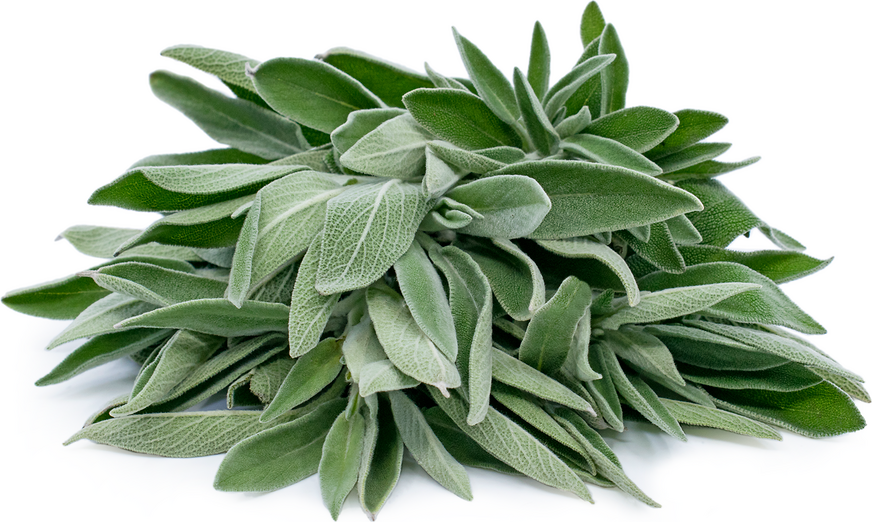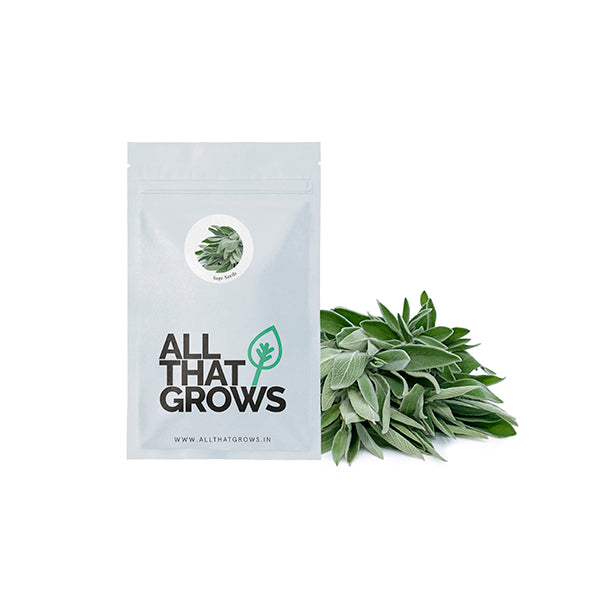



Sage Seeds
Grow this with
Seed Type: Non-hybrid, Open Pollinated & Non-GMO
Plant Character: Dense stems with long leaves
Leaf Character:Long green narrow leaves and silver-tint due to short white hairs
Cuttings: Cut the topmost portion of the stems, leaving at least 4 inches of stems
Uses: Recommended for Infusions, seasoning, stuffings, sauces, and salads
- SOWING
TIMEFebruary to May
- Sowing
DistancePlant to Plant - 6 to 8 inches
- Fruit
WeightN/A
- Fruit
ShapeN/A
- Days to
maturity80 to 90 days
- Details
- How to sow
- Reviews
A native to Mediterranean and Asia, Sage or Salvia Officinalis is a green leafy herb from the mint family. The term Sage literally translates to Save in Italian owing to the medicinal use of the plant dating back to the middle ages. Sage is also a very sacred herb to the Native Americans who used it to ward off negativity from life. Sage plant grows about 2 feet tall and the oval leaves of a sage plant are rough and wrinkly on touch and the flowers feature a two-headed corolla. Sage is an attractive plant for a lot of pollinators like bees, butterflies, and hummingbirds. Sage has a rather stimulating aromatic profile and sage leaves can be used in tinctures or tonics. The flowers of sage can be yellow, mauve or grey in color. Sage is also quite popular to flavor pasta and as a garnish for a variety of dishes. Sage is a good source of vitamin K, vitamin B6, calcium, iron, manganese, and fiber. Benefits of sage include antiinflammation, lowering cholesterol and improved dental health.
Planting instructions
Sow the seeds at least ¼ inch deep in rich loamy soil rich in nitrogen. Sage can also tolerate transplanting the seedlings once the seeds have germinated after 20-25 days of sowing.
Create a space in a pot and sow the seeds evenly and cover them a layer of soil. Water the pot/container regularly keeping in mind that the growing medium must be moist for seeds to get all the nutrients from the soil.
Keep the pot in the partial shade till germination and move to a sunny spot once the seeds have germinated. You can remove the week seedlings to promote a healthier pot of the herb.
Plant sage near cabbage or carrot as a companion plant but sow away from cucumber plants since they are sensitive to aromatic plants.
Growing Requirements
Pests & Diseases
Fungal diseases are one of the most common problems that one might face while growing sage due to crowding of plants and overwatering. One thumb rule to go by is to water the seedlings at the roots only. Additionally, mealybugs, whiteflies, and sap-sucking bugs can also affect the sage plant. Prune the affected part of the plant to address these issues or use a neem spray.
soil
Sage prefers rich loamy soil for better growth. The pH of the soil must range between 6.0 and 6.5.
Spot
Sage needs direct sunlight & relatively dry weather to grow well but can also tolerate mild shade. Make sure that the drainage of the pots is in place to avoid issues with roots. You can also consider adding a few pebbles at the bottom of the pot to improve drainage.
temperature
The ideal temperature for growing sage should range between 18–21°C(65–70°F).
watering
Sage is not too demanding when it comes to watering frequency. Water on alternate days once seeds have germinated.
how to harvest
Once the leaves have developed, you can harvest them easily by snipping the required quantity of the leaves with a pair of sharp scissors leaving at least 4-6 inches of the plant just above the ground.
You can also use dried sage by air drying small branches of sage upside down to dry in an airy location with sunlight.

Customer Reviews
The productiveness of any seed we sell is subject to your local climatic conditions*, the sowing method you adopt, and your commitment to the planting process. We give no warranty, expressed or implied, and are in no way responsible for the produce.
Please note that all our seasonal recommendations/ sowing information is as per the local climatic conditions. *For more information on the optimum conditions required for growing seeds in your region, please contact us at, hello@allthatgrows.in or Whatsapp us at, +91 8544865077
Questions & Answers
Have a Question?
Be the first to ask a question about this.


 Sign In
Sign In









